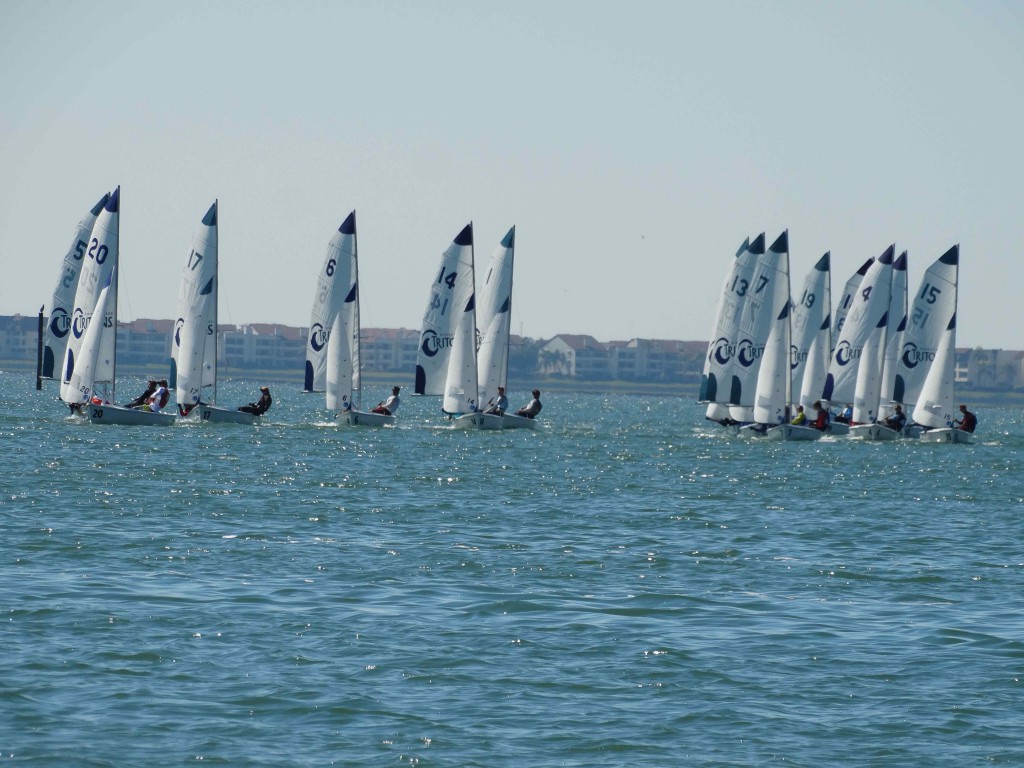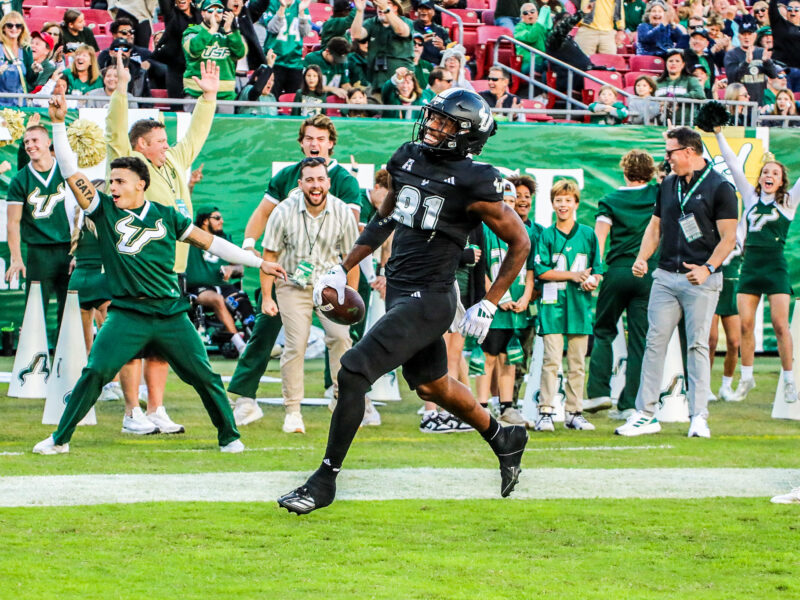
The USF coed’s and women’s sailing teams have hit the water with a splash after placing first and second in their spring-season-opening regatta.
Hoping to build off the momentum, women’s coach Allison Jolly and coed coach Tim King are staying busy preparing the sailors for their future competitions by teaching mechanics, strength and conditioning.
After focusing on speed last week, King chose “goal setting” as the weekly theme leading up to the second competition.
“It wasn’t a defined goal, like ‘I want to be top three at the end of qualifiers’ or anything like that,” Jolly said. “It was more activity oriented, which is good.”
While Jolly is working on fleet racing, King is concentrating on team racing, which is three-on-three tournament-style racing.
King said that there are 56 races over the course of the weekend.
“Something I’ll work on with the team races is having a strategy that is common between all of them,” King said.
King, who was a psychology major, said the purpose of the unified strategy is so the sailors aren’t pointing fingers if something goes wrong mid competition; instead, they can motivate one another in a time of need.
But aside from practice and competitions, the coaches are making sure the student-athletes work out three times a week for at least one hour.
“It’s under-emphasized in their mind how important physical fitness is,” King said.
Jolly said there are three components to sailing: strength, flexibility and endurance. Strength helps the sailors pull the sail better and enables them to keep their legs stretched out for long periods of time. Flexibility is for the constant movement in small spaces, while endurance is for the multiple races throughout the day.
Unlike football and basketball, the coaches cannot yell to their sailors during competitions. They watch from a distance or in a boat with other coaches and voice critiques after the boats cross the finish line.
The sailing teams, which have 26 boats, have held open-invitation tryouts for all levels of experience and have reached their capacity with 55 members # 35 women and 20 men. Therefore, the job of overseeing all the sailors’ particular techniques during a practice can become near impossible.
“There might be someone who had an isolated problem that wasn’t like anyone else’s and you are going to miss that,” Jolly said.
King said the size of their sailing program is one of the largest in the country.
“I don’t think we could honestly take more in,” King said. “It would come as a cost of not being able to give everyone attention, because they all want coaching and when there’s 17/18 boats in the water, we’re looking at (the) big picture and they’re coming up to us saying ‘Hey, did you see that tack?’ So, it’s tricky, it’s very tricky.”
To help provide an extra set of eyes on the water, assistant coach Rachael Silverstein, a former USF sailor, comes in a few times a week in hopes of noticing that extra little detail that might go unnoticed.
“It’s a real help,” Jolly said.
King and Jolly also understand that, aside from being coaches, a lot of the student-athletes look to them for guidance outside sailing.
“A lot of times, it’s the first time they have been away from home,” Jolly said. “Mom and Dad are now out of the picture and they’ll come to me; even former students will come to me and say ‘I got this job offer; I don’t know, what do you think?’ And obviously I am not going to make those decisions, but I have the perspective of being older and can help them sometimes. They just bounce things off me, which I think is probably the bigger part of my job than the sailing part.”


